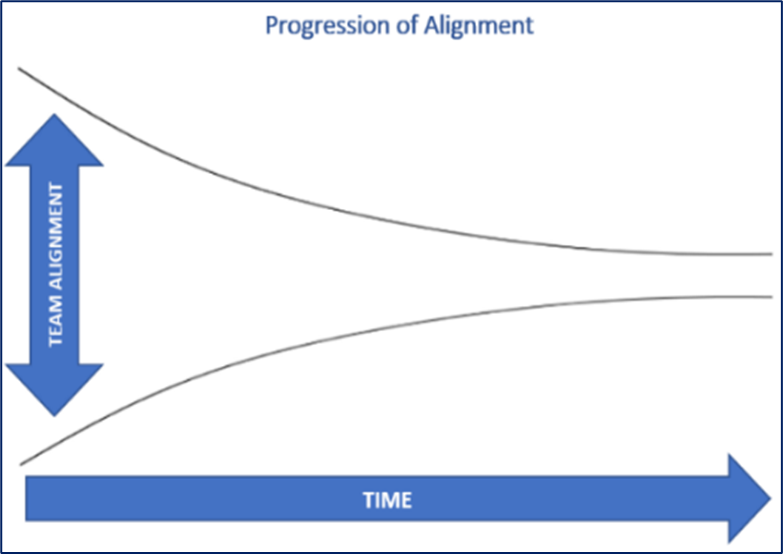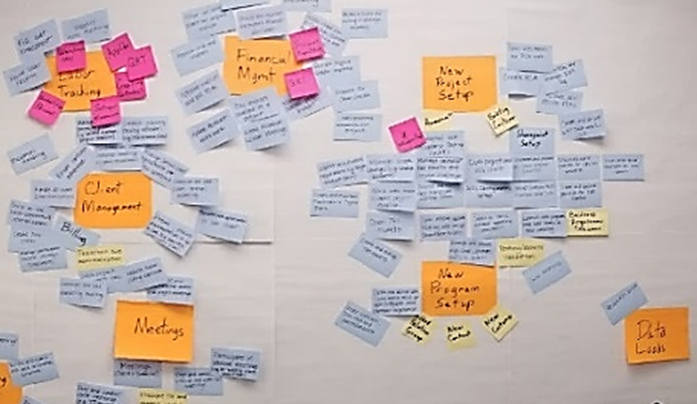
Bank Consultant’s Toolbox
Tricks of the Trade Revealed
Part 1: Vision Alignment
Driven by a Passion to Serve
“You may not get your way but you will get your say.”
It’s often said magicians never reveal their secrets. While consultants don’t practice sleight of hand, their “tricks of the trade” may appear elusive. In this first of a three-part series written for members of the Missouri Bankers Association (MBA), we explore how community bankers can improve project outcomes by leveraging easy to use consulting techniques.
My name is Jon Rigsby, and I am driven by a passion to serve community bankers. During my 25-year banking career, I helped banks modernize their operations and stay ahead of the digital curve. Today, I serve as the CEO of Hawthorn River, a software company that helps community banks streamline the lending process. We are proud to be an MBA Associate Member and look forward to building a relationship with each of member institution.
As a consultant, I engaged more than 40 banking institutions on a variety of strategic projects. While each project varied in scope and objective, “vision alignment” was always the first priority. To clarify the importance of vision alignment, let’s start with a brief story about a real-life consulting engagement.
A Brief Story About Failed Vision Alignment
On a beautiful (Pre-Covid) morning in 2015, I traveled to the east coast to facilitate a software selection project for a new client. The project objectives were clear: gather requirements, conduct vendor reviews, and facilitate a final decision. Relatively simple, so I thought.
As the meeting started, I was warmly introduced by the project manager but immediately felt unsettled by disapproving glares from the participants. Putting discomfort aside, I began outlining the engagement objectives. As conversations proceeded, tensions elevated to the point where the participants were yelling at each other. The team possessed different views of success and placed their own priorities above the success of the company. I quickly realized the team had failed to align on a common vision.
Progression of Vision Alignment
While spirited debate occurs, bankers often struggle with the opposite problem – artificial harmony. Artificial harmony forms out of “fear of conflict” and a desire to keep the peace. Unfortunately, silent disapproval also impedes the ability of a team to reach a common vision.
One of my dearest friends was a master at helping teams build a shared vision. When working with teams on vision alignment, he would often say, “You may not get your way but you will get your say”. A powerful message exists in this simple statement… While 100% agreement is impossible, 100% buy-in is achievable.
The diagram to the right illustrates the natural progressing that must occur to align team members on a common vision. At the start of any initiative, significant variances exist in opinions about the desired end-state (The Vision). By jointly investing time in structured discussions, the gap in vision alignment is narrowed. Even when the alignment gap cannot be completely closed, team members gain intrinsic buy-in to the shared outcomes because they got a “say”.
Tools of The Trade
With the foundation laid on the importance of Vision Alignment, let’s discuss two simple methods for facilitating productive team discussions using nothing more than post-it notes and poker cards.
Post It Note Activity
Meetings have two types of participants – those that dominate and those that listen. Hearing the voice of all participants is essential to the Progression of Alignment. The post-it note activity is an effective method of drawing out feedback from all participants. It works as follows:
Setup: Provide participants a post-it notepad and black sharpie.
Step 1: Pose A Question – To start the process, the meeting facilitator poses an open-ended question, such as “What are your fears about re-opening the bank lobbies?”.
Step 2: Individual Brainstorm – Each team member individually thinks about the question and writes down a list of responses – capturing each response on an individual post-it note with a black sharpie. Once all ideas are captured, the team moves on to a group discussion.
Step 3: Organize Common Themes – This is where the magic happens but the facilitator must not bias the process with personal opinions. To start, the facilitator asks for a volunteer to share an idea. Once shared, the team discusses the idea, clusters related ideas on the wall, and labels the theme. The team repeats this process until all post-it notes have been grouped into agreed upon themes. More important than the visual (example to right), the dialogue that occurs during this type of exercise is highly effective in drawing out feedback from all team members.
Poker Card Voting Activity
Another common threat to vision alignment is unconscious assumptions. Team members make decisions based on assumptions formed from prior experiences. Different experiences lead to different assumptions so it’s important to draw out assumptions early in the process. For this, I encourage teams to use a silent voting technique that is facilitated with poker cards.
Setup: Provide each participant the following cards: A, 2, 4, 8, K (suited or unsuited).
Step 1: Pose a Question – The facilitator poses a specific question, such as “What is the level of effort required to enable our entire bank to work from home?”.
Step 2: The Silent Vote – The facilitator instructs each participant to consider the question and vote by placing a card face down. An Ace represents the lowest effort and a King represents the highest effort. The “silent vote” concept is a critical component of this exercise.
Step 3: The Reveal – Once all the votes are face down, the team shows their votes. Material variance in votes shines a spotlight on where assumptions vary. By discussing the underlying assumptions, the team elevates their understanding and likelihood of success. The team repeats this process for other relevant questions.
Practice Makes Perfect
I encourage you to try these techniques at future meetings. While the techniques may feel awkward at first, they can serve as a fun way to break up the monotony of the standard meeting. Keep practicing so you break down hidden success barriers. Keep me posted on your progress!
And for my friends in South Carolina…. they gained alignment through these tools. By the end of the engagement, they were high-fiving to celebrate the shared success.
About Hawthorn River
We hope you enjoyed this article and look forward to sharing more information about Hawthorn River. Our end-to-end lending solution is transforming the way community bankers get work done. From streamlining the end-to-end lending process to automating specific steps along the way, Hawthorn River helps community banks increase productivity, reduce regulatory risk and elevate the borrower experience. For more information, please visit https://www.hawthornriver.com.
Hawthorn River
Jon Rigsby
Co-Founder & CEO
314-220-5009


